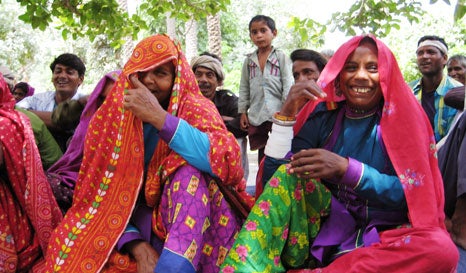
Part of a series on social inclusion
There’s a new book on the seemingly limitless landscape of Indian ethnography. Smita Tewari Jassal’s Unearthing Gender: Folksongs of North India was launched last week in Maryland. It uses folksongs to construct patterns of gender relations in North India, notorious for son preference and daughter neglect, underpinned by women’s lack of property rights.
That the author uses songs as evidence is not new. But her observations on how and whether researchers can enter into the concentric and circumscribed worlds of women are a refreshing insight into those worlds themselves.
Interesting, you may say distractedly, but why should the World Bank care? See the World Development Report 2012: Gender Equality and Development. For the first time, a major Bank report acknowledges squarely that informal systems, norms and values mediate social change. And that implementation and so the impact, of policies and programs are constrained and mediated by norms. Perhaps as a result, the first best solutions we promote don’t really work that well. The report also brings out the importance of agency – “one’s ability to make choices - and to transform them into desired actions and outcomes”. It reminds us that we would do well to pay more attention to both norms and agency when we design programs.
The book shows us that songs are also voice - voice, as in agency, to belabor the point. Women use songs as mechanisms of negotiation and resistance. And that these songs historically had a threatening quality for the norms they flouted, either implicitly or explicitly. High caste intellectuals, who formed the core leadership of the 19th century movements to “reform” Hindu culture and religion, interestingly had great discomfort with women’s songs. They discouraged (mainly lower caste) women from singing raunchy, explicit songs that threatened status quo in their castes and in their villages.
Finally, as folksongs became more mainstream, they got “co-opted” into the classical genre and began to lose their significance as mechanisms of resistance. They began to exclude their very protagonists. Classical singers were also typically from the upper castes and were often male. This further excluded lower caste women. She sees this as one of the myriad ways in which women’s voice was co-opted. The book is a repertoire of folksongs but also a chronicle of resistance, cooptation and exclusion.
We would do well to listen carefully to songs.


Join the Conversation